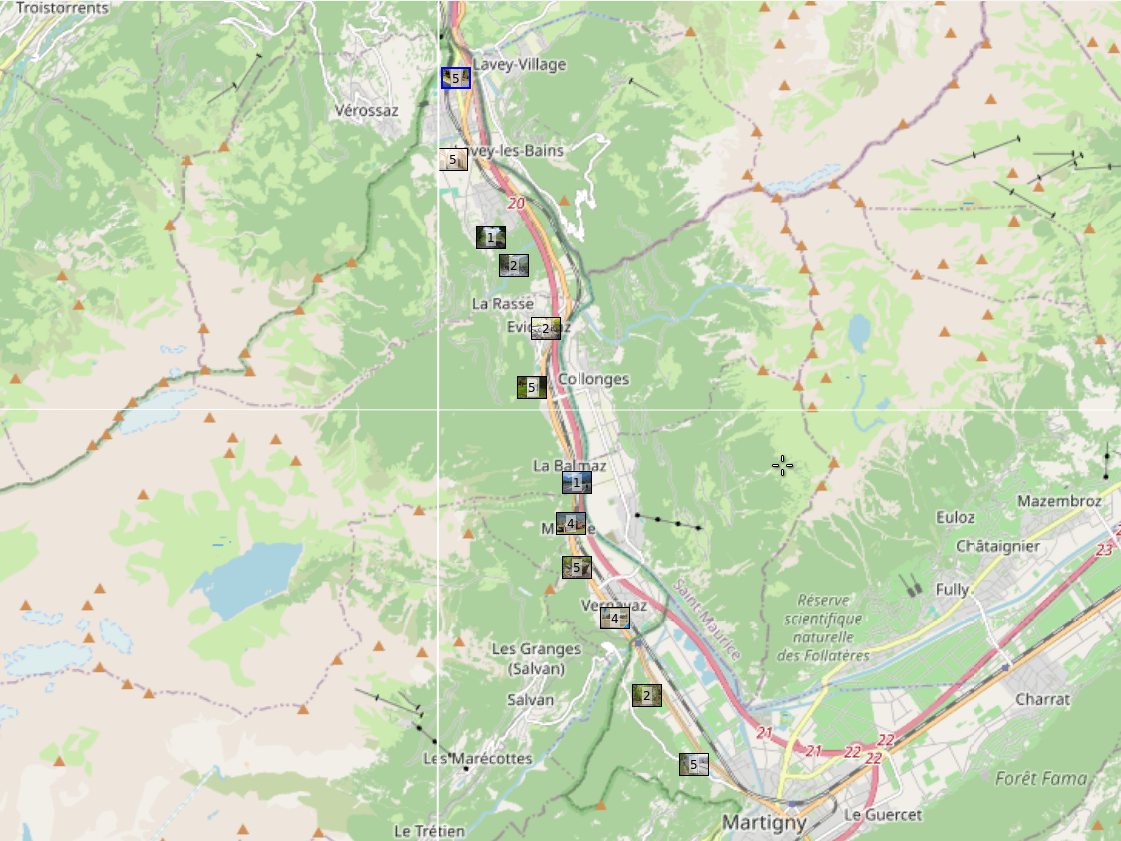We had already looked round the cathedral at the end of our preveios stage,
and had in fact walked this stretch in the opposite direction on the Camino:
( see Martigny to St. Maurice on the Rhein-Reuss-Rhone Way of St. James)
Never-the-less, on arriving at the railway station, rather than setting off away on the town on the marked Via Franigena,
we went down to the Monatastic Market to have a look around.
We then returned to the railway station, and followed the path through the car park
and across the bridge to the stained glass monument to Saint Maurice. From there it was only a short walk to
Vérolliez, where a small chapel commemorates the martyrdom of Saint Maurice and his companions.
At the end of the 3rd century, a Roman officer named Maurice had been executed at St. Maurice for his Christian beliefs.
A place of pilgrimage was then created here, and the Abbey of St. Maurice was founded by Sigismund, the King of Burgundy, in 515.
After a long uphill stretch on a gravel path through woodlands and on a wooden bridge across the river, we reached
Evionnaz, where we paused for a drink in a friendly cafe with a covered outside seating area.
After having a chat with the locals (or at least Sue did, as she can speak the local language), we went on past
the remains of an anti-tank embankment, consisting of concrete pyramids, reminiscent of Toblerone chocolate,
as well as a concealed anti-tank gun emplacement, that had served as a line of defence during World War II.
After some fairly boring stretches, including some along the side of a main road, with a railway and motorway on the other side of it,
and a snack break in Mieville, we reached the Pissevache waterfall, whose beauty was an inspiration for Goethe, Rousseau and other poets and painters.
The name of the 116-metre-high waterfall is said to be inspired by the French saying “il pleut comme vache qui pisse”
(literally: it is raining like a cow pissing). After that, we came across a sign warning us to pass quickly and not to stop because of falling rocks!
We didn't see any actually falling, but we saw enough fallen rocks of some size, some of which had only fallen recently onto the trees beneath them.
A little later, we went past Vernayaz and the entrance to the Trient Gorge, also famous for the battle of Trient in 1844,
the closest Switzerland came to a civil war. This was followed by a walk through a wooded wet land area with its protected frogs,
and a hike into Martigny crossing the Dranse river and on to the railway station.
We finished up with tasty take-aways from a shop across from the station, and took the train home.

